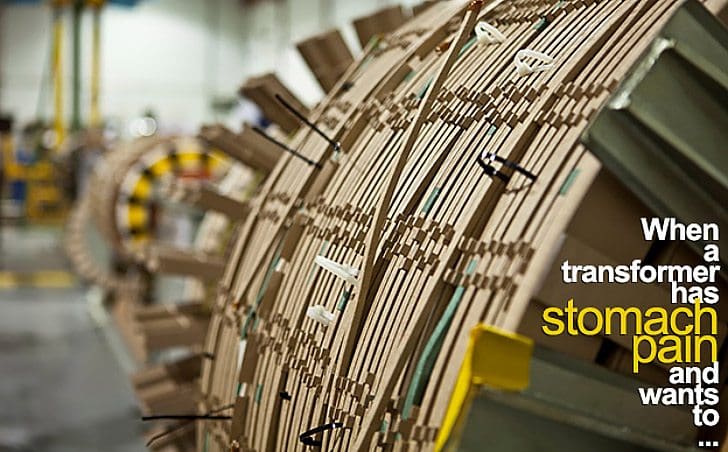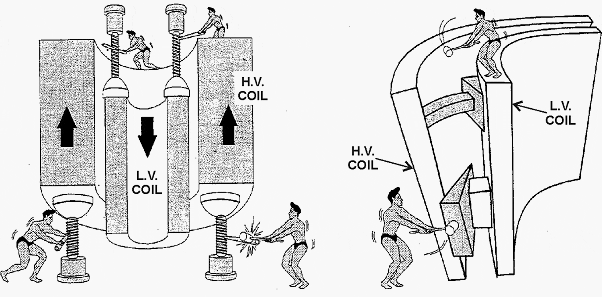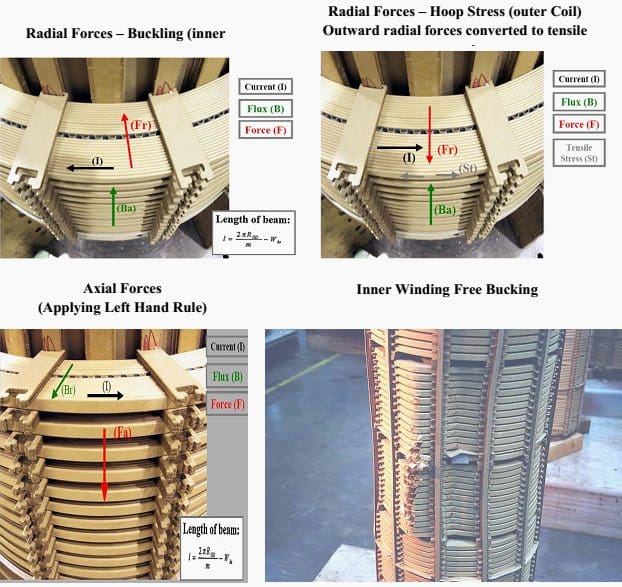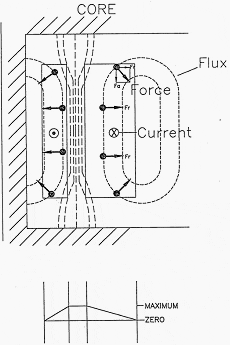About stomach pain
During normal operation, transformer internal structures and windings are subjected to mechanical forces due to the magnetic forces. These forces are illustrated in Figure 1. By designing the internal structure very strong to withstand these forces over a long period of time, service life can be extended.

However, in a large transformer during a “through fault” (fault current passing through a transformer), forces can reach millions of pounds, pulling the coils up and down and pulling them apart 60/50 times per second.
At the same time, the right-hand part of the figure shows that the high- and low-voltage coils are being forced apart.

Keep in mind that these forces are reversing 50/60 times each second. It is obvious why internal structures of transformers must be built incredibly strong.
Many times, if fault currents are high, these forces can rip a transformer apart and cause electrical faults inside the transformer itself. This normally results in arcing inside the transformer that can result in explosive failure of the tank, throwing flaming oil over a wide area.
There are protective relaying systems to protect against this possibility, although explosive failures do occur occasionally.
How to prevent pain
Through Fault – Short Circuit withstand considerations
The windings are subject to both radial and axial forces related to the current and flux interactions. Radial forces in the inner winding (normally the LV winding) are in compression while the outer winding (normally the HV winding) forces are in tension.
The picture below is an example ofa free bucking mechanical failure of an inner winding resulting from radial forces in compression on the winding. Note, even though there is mechanical failure, there wasn’t a dielectric failure of this winding.

Flux fields are dependent of the balance of the ampere turn distribution of the HV and LV windings. When the ampere turns of the HV and LV windings are equal and balanced, the only forces are radial.
DETC taps (De Energized Tap Changer) in the HV windings and LTC (Load Tap Changer) operation result in changes in the ampere turn distribution resulting in axial forces. If the HV and LV windings are not aligned axially or one winding is physically shorter than the other, ampere turn balance is significantly affected and axial forces are magnified.

Autotransformers, low impedance, motor starting duty, transformers with multiple voltages by reconnecting the transformer windings in series and parallel configurations, three winding transformers with dual secondary windings for start up or unit auxiliary service at power plants – all can result in increased axial and radial forces during a short circuit and require special consideration.
Construction of power transformer (VIDEO)
LT/Secondary winding process (VIDEO)
References:
- Presentation on Short-circuit Forces by H. Jin Sim, CTO of SPX-Waukesha
- Transformers Basics, Maintenance and Diagnostics – U.S. Dpt. of the Interior Bureau of Reclamation
- The Design and Performance of Circular Disc, Helical and Layer Windings for Power Transformer Applications – David L. Harris, P.E.











Detail description of short circuit test along with calculations of fault current
LV coil carrying high current requires thick conductor and it has high radial force withstand capability . hv coil is subjected to elongating force and the that is normally met by tensile strength of the conductor .
so , radial force is normally not a problem for transformer under through fault currnt
pl give opinion—-
thanx—mohapatra
buckling is a combination of radial and axial force . if axial force is controlled by support mechanism – then buckling can be avoided .
axial force can be controlled by clamping the inner and outer coils together with then help of top plate , bottom plate and clamping rods .
radial force can be controlled by selecting the no. of radial supports
pl reply-thanx————-mohapatra